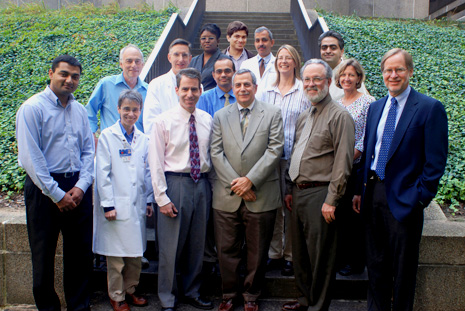Cancer
Breast Cancer Patient Shares Her Journey to Help Others
Breast Cancer Awareness Month is designated as a time is to support those who have been through and are going through, the difficult breast cancer journey. In addition, it has a goal of raising awareness of ways in which this deadly disease can be avoided and found earlier.
October 14, 2021 | Jennifer Walker
Cancer Doesn’t Stop for COVID
Cancer doesn’t wait for COVID and delaying care can cause a higher risk to patients
September 14, 2021 | Jennifer Walker
UConn Health Researcher Studying Walnuts’ Ability to Reduce Colon Cancer Risk
Daniel Rosenberg is investigating how, and why, walnuts could reduce colon cancer risk factors, paving the way for new individualized nutrition treatments.
August 31, 2021 | Anna Zarra Aldrich '20 (CLAS), Office of the Vice President for Research
Cancer Research Award for UConn Internal Medicine Resident
The American Society of Hematology selects Dr. Joshua Fein among the recipients of its 2021 HONORS Award.
August 26, 2021 | Ira Morrison
A Multidisciplinary Approach to Surviving Head and Neck Cancer
Treatment of advanced head and neck cancer requires close collaborations between several health care services. The team at the Carole and Ray Neag Comprehensive Cancer Center provides a multidisciplinary approach that provides better outcomes.
June 23, 2021 | Jennifer Walker
Cancer Survivor Finds Peace with New Lifestyle
Focusing on living in the moment rather than worrying about the future has helped Sandra Theriault through her cancer survivorship.
June 8, 2021 | Jennifer Walker
UConn Health Specialty Helps Cancer Survivors Thrive
Millions of adults and children in the United States are cancer survivors whose lives changed in an instant when they first learned of their cancer. Many say that although they were relieved when the treatment ended, it was hard to transition to a new way of life.
June 3, 2021 | Jennifer Walker
2021 Top Doctors Named by Connecticut Magazine
See which 43 UConn Health physicians have been named 2021 Top Doctors by Connecticut Magazine. Plus, read more about four UConn Health doctors and their additional unique talents beyond their daily practice of medicine.
June 2, 2021 | Lauren Woods
Life of Young Mom with Sickle Cell Disease Improved by New Drug
Patients at UConn Health's New England Sickle Cell Institute have a range of advanced health management options available to them
June 1, 2021 | Lauren Woods
Establishing Guidelines for Surgery After Skin Cancer
Physicians now have evidence-based recommendations for when skin cancer leaves a patient in need of reconstructive surgery. UConn Health’s chief of plastic surgery, Dr. Andrew Chen, led a national brain trust to come up with them.
May 25, 2021 | Chris DeFrancesco '94 (CLAS)









